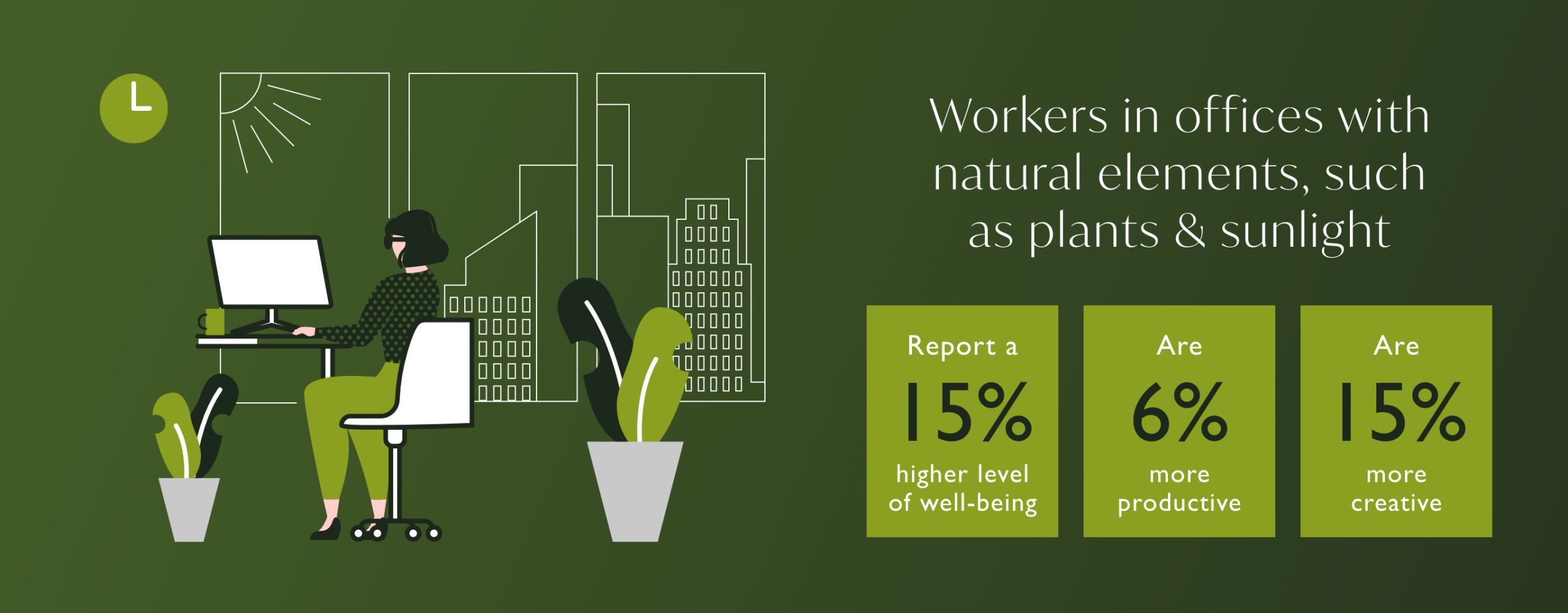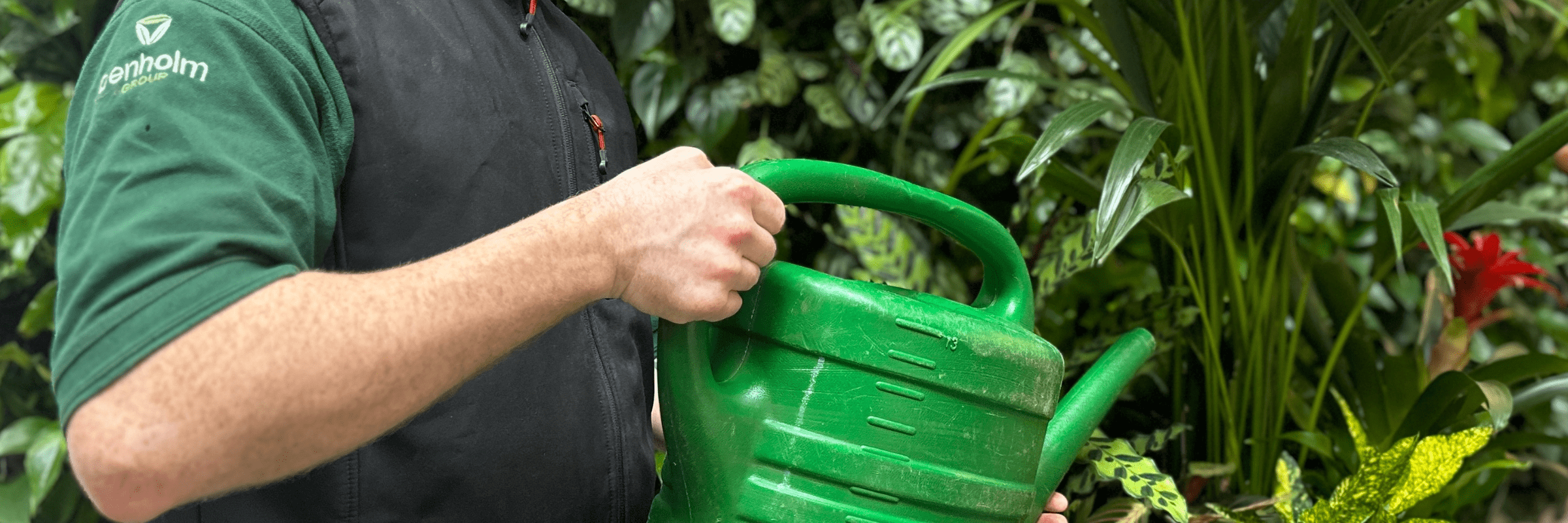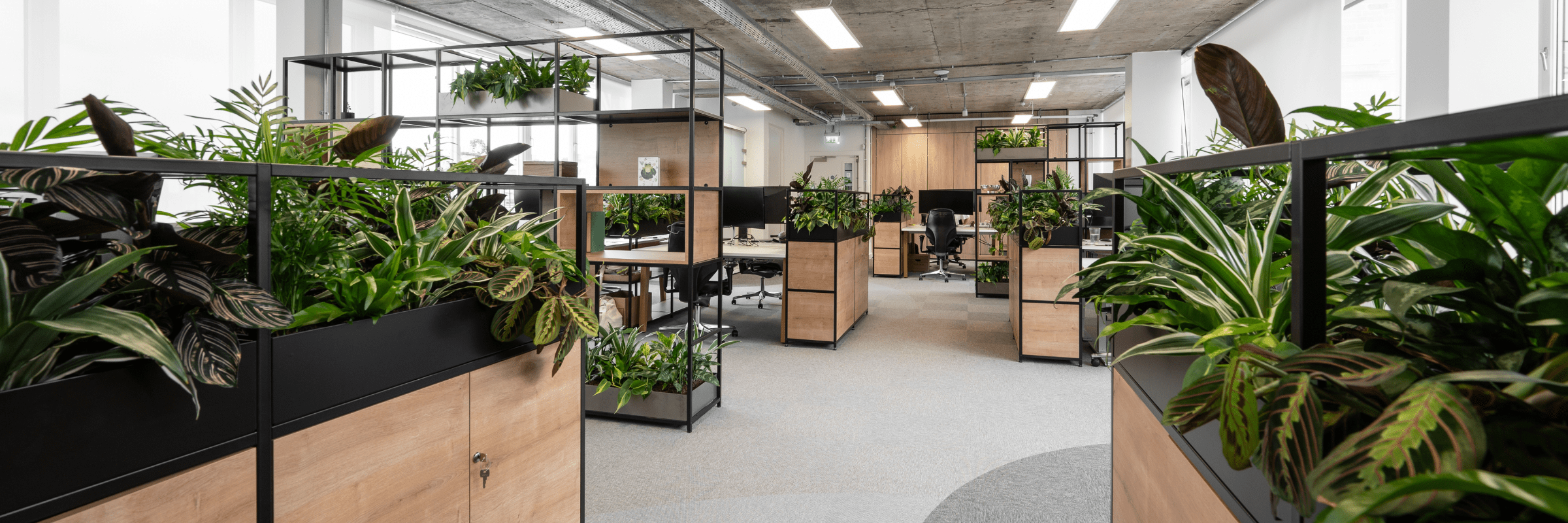Having a healthy pool of employees is critical to any well-run business and absence through illness can be costly. Whilst there is an endless list of factors that will determine the health of an employee, there is mounting evidence to show that plants can play a key role in reducing absenteeism in the workplace.
Air quality and respiratory illnesses
Recent survey findings from CIPD and Simplyhealth have revealed that absence rates in the UK are currently at a 10-year high. Minor illnesses, such as coughs, cold and flu, are listed as a leading cause, and the spread of these illnesses is often accelerated by VOCs found in busy indoor spaces which hold a lot of recycled air.
VOCs (Volatile Organic Compounds) are harmful gasses that are emitted from everyday materials typically found indoors such as paints, disinfectants, air fresheners, and common office appliances like photocopiers and printers. Short-term exposure to VOCs can cause eye, nose and throat irritation, headaches, nausea, vomiting and dizziness – with long-term exposure potentially having more severe consequences such as liver or kidney damage and even cancer.
“The average adult, when resting, inhales and exhales about 13kg of air per day. This compares with around 2kg of food and 3kg of fluids we consume yet health advice on breathing is dwarfed by the volume of guidance on what we should eat and drink.” BESA (Building Engineering Services Association)
With 82.9% of Brits now living in urban areas and spending an average of 90% of time indoors we are more susceptible to these types of illnesses than ever before.
To minimise the occurrence of these illnesses within an office, plants can be used to help remove VOCs from the air whilst simultaneously making an office more aesthetically pleasing. Their effectiveness in purifying the air has been backed by various studies, most famously by NASA’s Clean Air Study.
NASA scientists placed plants in chambers and pumped in harmful chemicals like ammonia, formaldehyde, xylene and toluene, trichloroethylene, and benzene. After 24 hours they tested the air quality in each chamber and concluded that some plants were able to remove up to 90% of the harmful chemicals.
“If man is to move into closed environments, on Earth or in space, he must take along nature’s life support system. Plants.” Dr. Wolverton, principle investigator of NASA’s Clean Air Study
These findings were supported by further research carried out by the Agricultural University of Oslo, who conducted a study across 51 offices and reported a reduction in fatigue, headaches, sore/dry throats, coughs, asthma and dry facial skin in offices with sufficient greenery.

Mental wellbeing
Beyond improving indoor air quality and reducing respiratory illnesses, plants have also been proven to positive impact on our mental wellbeing which can help to reduce absenteeism.
The University of Technology in Sydney conducted a study that found plants in the workplace were crucial for reducing stress and other issues including:
– 58% decrease in depression/dejection
– 44% reduction in anger/hostility
– 38% fall in fatigue
– 37% fall in tension and anxiety
This comes as no surprise as we have an in-built affinity with nature, and green spaces communicate to workers that their employers care about them and their welfare.
The importance of maintenance
When using plants with the intention of improving air quality, boosting wellbeing and ultimately reducing absenteeism; it is crucial to ensure they are well maintained, as a dying plant can have the opposite effect.
Providing they are healthy and well maintained, all plants will purify the air to some extent. They do this by taking harmful gasses out of the atmosphere and sequestering them in their roots and cells. Some of these chemicals are broken down by fungi in the soil and others are stored in the plant. Plants with a larger leaf surface will generally do a better job of eliminating harmful gasses from the air than those with small leaves, and the volume of plants used will make a difference.
We can assist with providing creative solutions to maximise the potential of your space, as well as a full maintenance service that ensures our plants stay vibrant all year round.

Additional measures
Plants are just one method of reducing absenteeism in the workplace alone and there are various further measures that can be taken alongside introducing more greenery into a workspace:
Ensuring good standards of ventilation
Reducing sources of pollution and using an indoor air quality (IAQ) monitor
Maintaining safe working conditions and equipment
Regularly reviewing processes
Providing access to exercise facilities/cycle-to-work schemes
Promoting a healthy lifestyle outside of work

To add an extra layer of protection to your workspace get in touch to obtain a free quotation, call us today on 01324 861300.
Resources
Workplace absences soar to highest level in over a decade
GOV.UK – Trend Deck 2021: Urbanisation
Wolverton Environmental – NASA Report